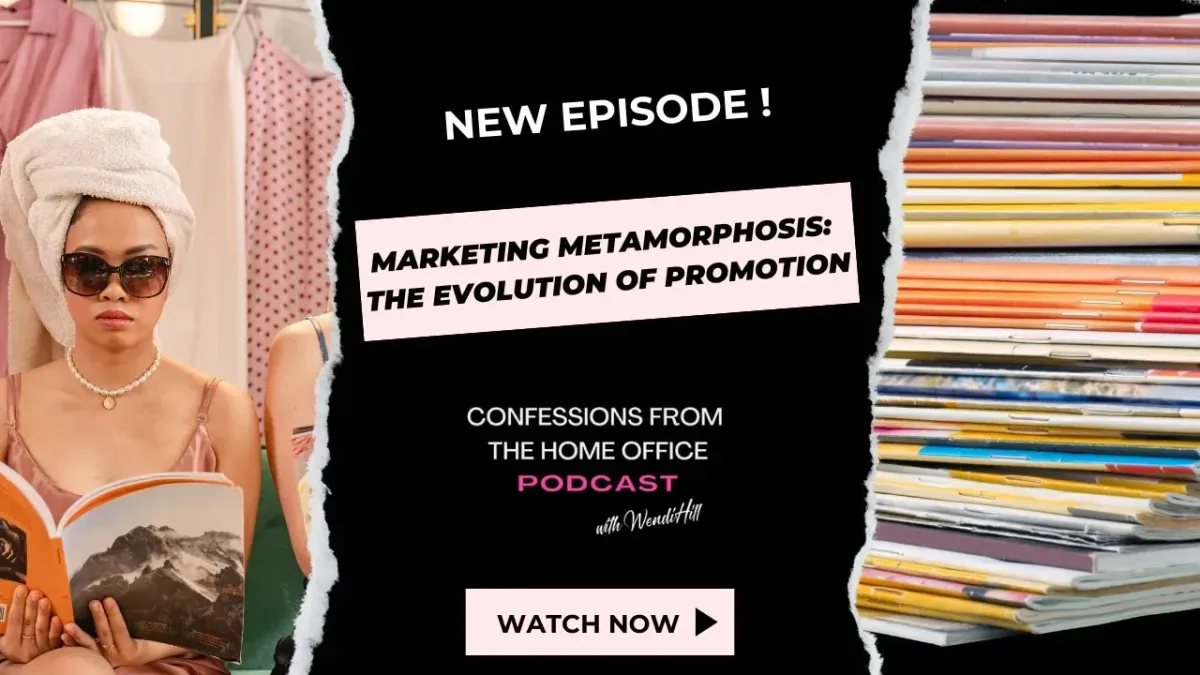Our Blogs
Lorem ipsum dolor sit amet, consectetuer adipiscing elit. Aenean commodo ligula eget dolor. Aenean massa. Cum sociis natoque penatibus et magnis dis parturient montes, nascetur ridiculus mus.

Marketing Metamorphosis: The Evolution of Promotion
As I approach my 20th year of running Market Momentum from my home office in Greenville, South Carolina, I can't help but reflect on how dramatically marketing has evolved since 2005. From being a "BlackBerry girl" who couldn't imagine needing an iPhone to navigating today's AI-driven landscape, I've witnessed and adapted to tremendous changes in how we connect with audiences.
The Early Days: Print, Traditional Media, and Basic Websites
When I first started my business, marketing was heavily focused on print materials and traditional advertising. We created lots of brochures, direct mail flyers, and bought TV, radio, and outdoor advertising spots. Digital marketing existed but was expensive and required extensive custom programming. Websites were essentially online brochures - content-heavy platforms where we'd upload PDFs and company information for people to read.
I remember being absolutely certain that my BlackBerry was all I'd ever need. I could type under the table during meetings with that little keyboard, and I thought iPhones were just unnecessary extras. Looking back, I have to laugh at how wrong I was!
The Digital Revolution
Today's marketing landscape is completely different. Digital marketing is usually where we start, rather than treating it as an afterthought. Websites have evolved from static brochure-ware to dynamic platforms that need to work seamlessly across all devices. I learned this lesson the hard way when I took my kids to an Italian restaurant at the beach and couldn't read their non-mobile-friendly menu on my phone - we ended up leaving without ordering!
Social Media's Evolution
The social media landscape has transformed entirely. In 2005, Facebook was just getting started, MySpace was still around, LinkedIn had just launched, and Twitter was about to debut. Now, social media isn't just about posting content - it's about building communities and providing value. Content creation has become a full-time job in many companies, with businesses essentially functioning as mini publishing houses.
From Interruption to Attraction
We've shifted from interruption-based advertising to content-driven marketing. Instead of relying on TV commercial breaks or radio spots, we're creating valuable content to attract customers. I rarely listen to traditional radio anymore - like many people, I prefer playlists and podcasts. This shift has pushed marketers to become more creative in how we reach audiences.
The Technology Revolution
One of the biggest changes I've witnessed is in marketing technology. Back in 2005, if you needed an app or custom solution, you had to hire a programmer and potentially spend six figures. Now, there are tools and apps for almost everything: Trello, Flowdesk, Mailchimp, Canva, and countless others. This has democratized marketing, allowing smaller businesses to compete with larger ones more effectively.
Looking Ahead
As I think about the future, I expect AI, augmented reality, and voice search to continue reshaping our industry. But one thing I've learned over two decades is the importance of staying adaptable while being patient. Marketing success still comes down to four core elements: assessment, planning, execution, and optimization.
While keeping up with technology can be stressful, these changes have ultimately made marketing more accessible and measurable. We can now reach global audiences and compete with larger companies in ways that weren't possible in 2005. The key is to embrace change while staying focused on what really matters - connecting with customers and providing value.
For those just starting their marketing journey or looking to update their approach, remember that while tools and platforms will continue to evolve, the fundamental goal remains the same: building meaningful connections with your audience. That's something that hasn't changed in 20 years, and I don't expect it to change in the next 20 either.
Questions: Send me an email! [email protected]
FAQ's
Q:
How soon can we start?
After our initial consultation, we can typically begin within 1-2 weeks.
Q:
How long is the commitment?
While we recommend a minimum 6-month engagement for best results, we offer flexible terms to suit your business needs.

